Life & Faith
Sermon on the feast of the Three Hierarchs
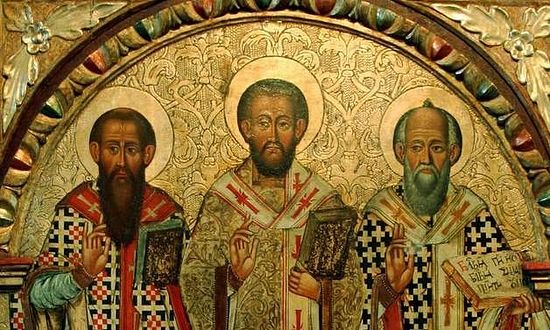 Тhe Feast of the Three Holy Fathers, Great Hierarchs and Ecumenical Teachers Basil the Great, Gregory the Theologian, and John Chrysostom is an annual commemoration of our Holy Orthodox Church on which we honour the unwavering faith and spiritual brilliance of three Saints who offered the entirety of their lives and abilities in the service of God and humankind. As selfless archbishops and pastors they led the faithful in worship and ministry. As loving teachers they offered guidance in the path of holiness. As divinely-inspired theologians they used their intellectual skills to confront error and defend truth. As holy men they lived in a manner that showed to all the grace and blessings of communion with God.
Тhe Feast of the Three Holy Fathers, Great Hierarchs and Ecumenical Teachers Basil the Great, Gregory the Theologian, and John Chrysostom is an annual commemoration of our Holy Orthodox Church on which we honour the unwavering faith and spiritual brilliance of three Saints who offered the entirety of their lives and abilities in the service of God and humankind. As selfless archbishops and pastors they led the faithful in worship and ministry. As loving teachers they offered guidance in the path of holiness. As divinely-inspired theologians they used their intellectual skills to confront error and defend truth. As holy men they lived in a manner that showed to all the grace and blessings of communion with God.
Venerable Ephraim the Syrian
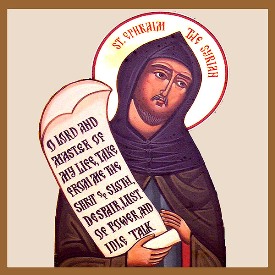 Saint Ephraim the Syrian, a teacher of repentance, was born at the beginning of the fourth century in the city of Nisibis (Mesopotamia) into the family of impoverished toilers of the soil. His parents raised their son in piety, but from his childhood he was known for his quick temper and impetuous character. He often had fights, acted thoughtlessly, and even doubted God’s Providence. He finally recovered his senses by the grace of God, and embarked on the path of repentance and salvation.
Saint Ephraim the Syrian, a teacher of repentance, was born at the beginning of the fourth century in the city of Nisibis (Mesopotamia) into the family of impoverished toilers of the soil. His parents raised their son in piety, but from his childhood he was known for his quick temper and impetuous character. He often had fights, acted thoughtlessly, and even doubted God’s Providence. He finally recovered his senses by the grace of God, and embarked on the path of repentance and salvation.
Once, he was unjustly accused of stealing a sheep and was thrown into prison. He heard a voice in a dream calling him to repent and correct his life. After this, he was acquitted of the charges and set free.
Venerable Macarius the Great of Egypt
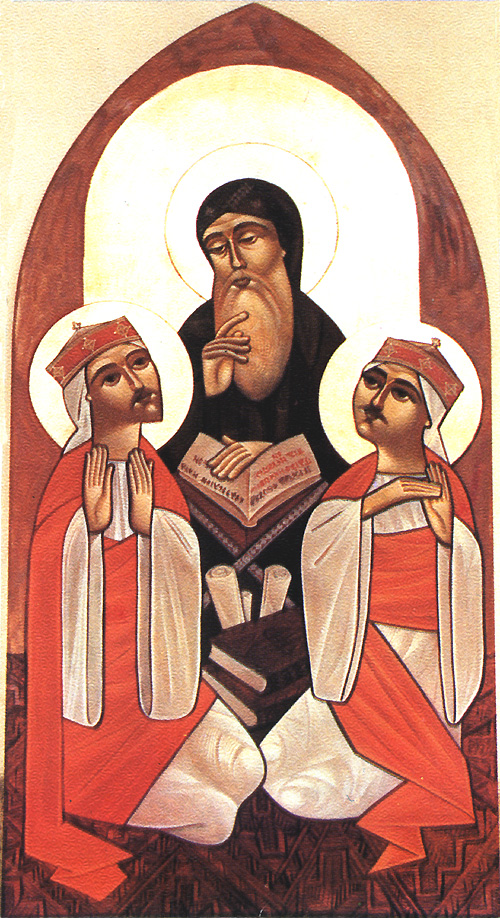 Saint Macarius the Great of Egypt was born in the early fourth century in the village of Ptinapor in Egypt. At the wish of his parents he entered into marriage, but was soon widowed. After he buried his wife, Macarius told himself, “Take heed, Macarius, and have care for your soul. It is fitting that you forsake worldly life.”
Saint Macarius the Great of Egypt was born in the early fourth century in the village of Ptinapor in Egypt. At the wish of his parents he entered into marriage, but was soon widowed. After he buried his wife, Macarius told himself, “Take heed, Macarius, and have care for your soul. It is fitting that you forsake worldly life.”
The Lord rewarded the saint with a long life, but from that time the memory of death was constantly with him, impelling him to ascetic deeds of prayer and penitence. He began to visit the church of God more frequently and to be more deeply absorbed in Holy Scripture, but he did not leave his aged parents, thus fulfilling the commandment to honor one’s parents.
Until his parents died, Saint Macarius used his remaining substance to help them and he began to pray fervently that the Lord might show him a guide on the way to salvation. The Lord sent him an experienced Elder, who lived in the desert not far from the village. The Elder accepted the youth with love, guided him in the spiritual science of watchfulness, fasting and prayer, and taught him the handicraft of weaving baskets. After building a separate cell not far from his own, the Elder settled his disciple in it.
St. Maximus the Confessor
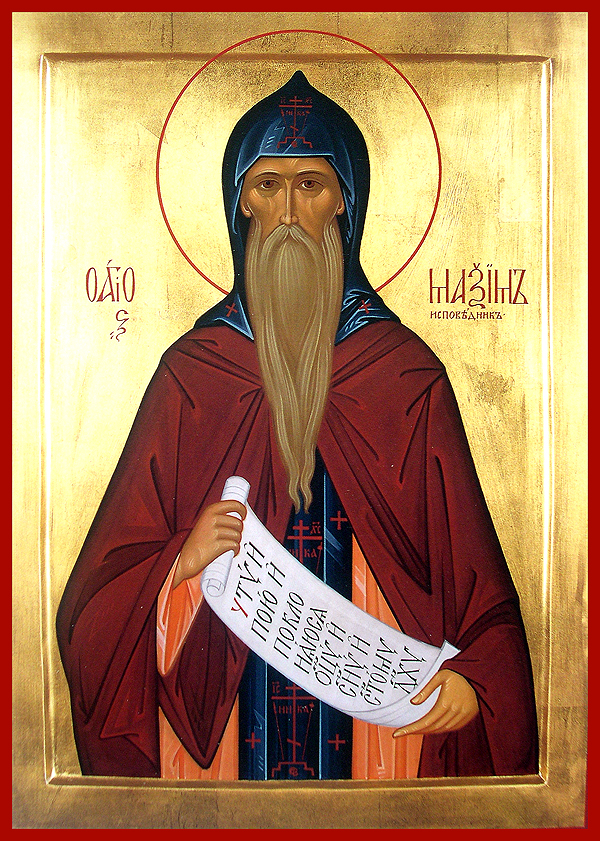 Saint Maximus the Confessor was born in Constantinople around 580 and raised in a pious Christian family. He received an excellent education, studying philosophy, grammar, and rhetoric. He was well-read in the authors of antiquity and he also mastered philosophy and theology. When Saint Maximus entered into government service, he became first secretary (asekretis) and chief counselor to the emperor Heraclius (611-641), who was impressed by his knowledge and virtuous life.
Saint Maximus the Confessor was born in Constantinople around 580 and raised in a pious Christian family. He received an excellent education, studying philosophy, grammar, and rhetoric. He was well-read in the authors of antiquity and he also mastered philosophy and theology. When Saint Maximus entered into government service, he became first secretary (asekretis) and chief counselor to the emperor Heraclius (611-641), who was impressed by his knowledge and virtuous life.
Saint Maximus soon realized that the emperor and many others had been corrupted by the Monothelite heresy, which was spreading rapidly through the East. He resigned from his duties at court, and went to the Chrysopolis monastery (at Skutari on the opposite shore of the Bosphorus), where he received monastic tonsure. Because of his humility and wisdom, he soon won the love of the brethren and was chosen igumen of the monastery after a few years. Even in this position, he remained a simple monk.
Panagia Galaktotrophousa (Milk-Feeder) of Hilandar Monastery
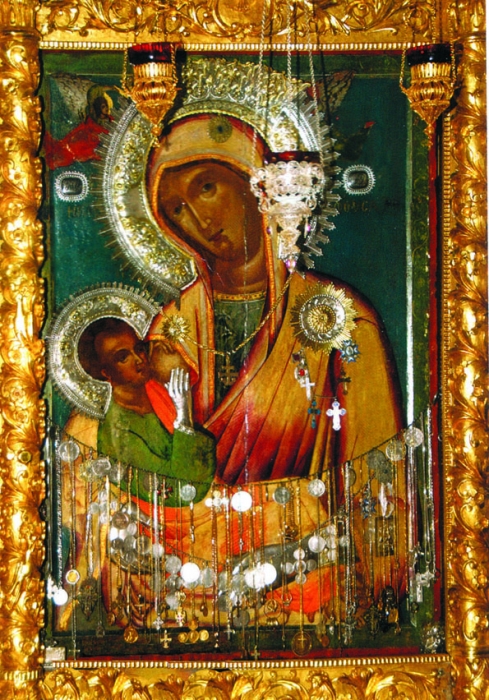 Verses
Verses
Noetic milk flows O you who were pregnant with God,
from your divine icon Galaktotrophousa.
On the third behold the honorable radiance of Mary the
Theotokos.
Galaktotrophousa is translated as „Milk-Feeder“. This icon of the Mother of God was originally located at the Lavra of Saint Savvas the Sanctified near Jerusalem. Befor the death, the holy founder of the Lavra foretold that a royal pilgrim having the same name as himself would visit the Lavra. As he approached the reliquary of Saint Savvas the Sanctified, the Saint's staff fell at his feet. The brethen asked the visitor his name, and he told them he was Archbishop Sava of Serbia. Obeying his instructions of their founder, the monks gave Saint Sava his staff, the Milk-Feeder Icon, and the Icon of the Three Hands.
St. Genevieve of Paris
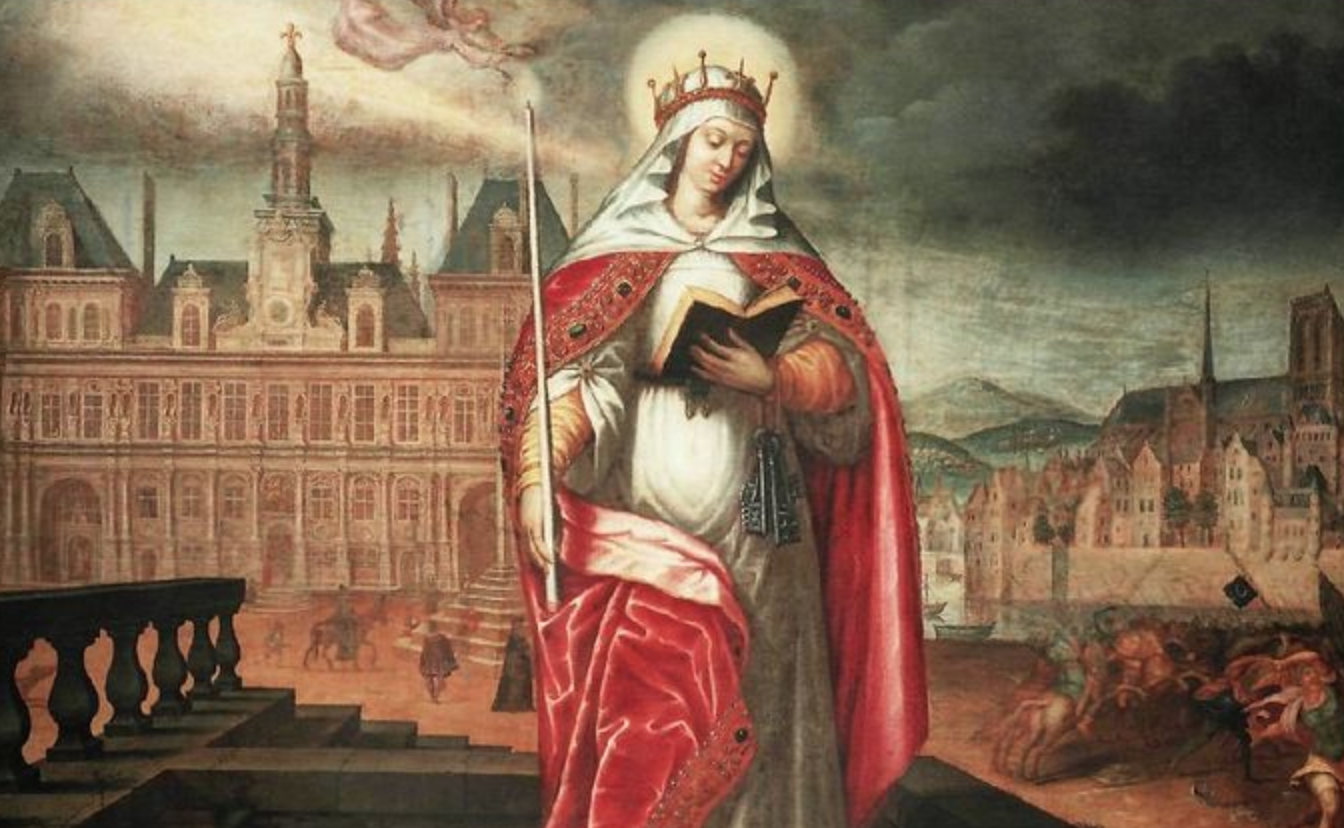 Commemorated January 3/16
Commemorated January 3/16
In France 500 years after Christ's birth, there lived a shepherd girl with a blooming faith in her heart, the very same faith which budded in the hearts of the Judean shepherds who followed the star to the Lord's manger-bed.
Born into a wealthy family, the young Genevieve watched her family's flock as a matter of custom rather than need. Their home was in the lovely hill-country of Nanterre outside Paris. And in it Genevieve's soul was nourished with the Gospel message, the icons which illumined it, and the example of her parents' peaceful and pious lives.

